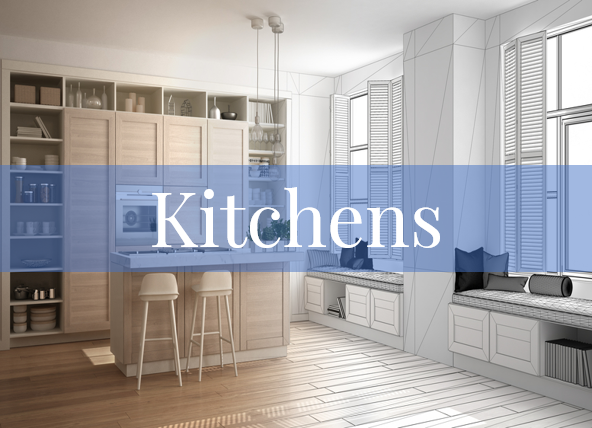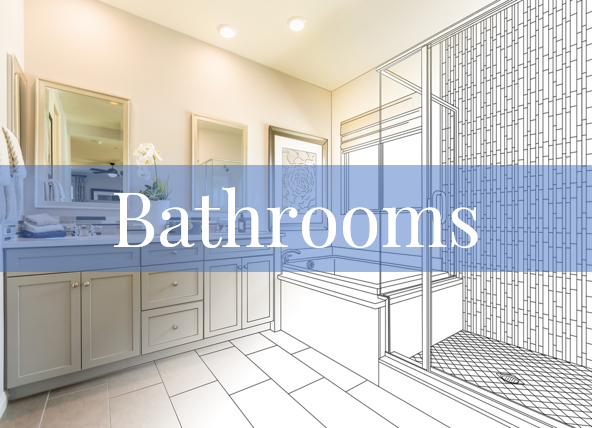Your Ultimate Guide to Selecting the Perfect Tile
/Picking just the right tile for your renovation project can be a difficult task. You may think all you have to do is choose one you like the look of and that matches the rest of the décor in the room. But there is much more to consider than just the appearance of the tile. This blog is your ultimate guide to selecting the perfect tile for your next renovation project.
Prefer to listen?
There are many questions you should ask yourself when you start looking at tiles.
1. Is that a wall tile or a floor tile?
The main thing to remember is that floor tiles can be installed on walls, but wall tiles cannot be installed on floors.
Wall tiles are much lighter and thinner, which makes them much more fragile than floor tiles. Wall tiles are also made with a different glaze that is not intended for areas of high traffic. Essentially, wall tiles are not intended to be load-bearing. If you are tiling a floor, make sure that the gorgeous tile you just fell in love with is not a wall tile.
2. Do you want a porcelain or ceramic tile?
One is not necessarily inferior to the other; they are just different. There are, however, advantages to porcelain tiles.
Porcelain tiles are harder than ceramic, better for high-traffic areas, absorb less moisture, and can even survive frost if you decide to install them outdoors. Porcelain is also less likely to crack when installed on a wood substrate.
The reason why porcelain is stronger than ceramic is because it has extra compounds added to the clay during production, which make it denser and less porous. It’s also fired at a higher temperature, at greater pressure, and for a longer period of time.
There are three different types of porcelain tiles, and to me, the through-body porcelain tiles have a huge advantage. They have the same colour all the way through the tile, and they are also very scratch-resistant. The main benefit of through-body porcelain is that if you happen to drop something heavy or sharp on the floor tile and it chips, you won’t notice it as much because the same colour is throughout the tile.
This differs from ceramic because the pattern on ceramic tiles is just on the surface, revealing clay underneath should it chip. The main benefit of ceramic tiles is that they are typically less expensive than porcelain tiles.
3. Do you want a matte or gloss finish?
This is a personal decision. However, when it comes to floors where you might encounter water (e.g., bathrooms or front entrances), it is best to go with a matte finish as the gloss finish will be slippery when wet.
4. What design or colour do you want?
This is also a very personal decision. There are literally thousands of designs out there, so you want to have an idea of what you’re looking for.
If you’re working with a contractor, ask them if they have a designer on staff that can help. If you’re doing a countertop as part of your project, you might want to bring a sample of the countertop along when selecting your tiles. It’s a great idea to draw inspiration from the countertop. Pick a colour you really like from the countertop and start from there. Tiles are also available in designs that resemble wood, marble, and slate.
5. Do you want a rectified tile?
These are tiles that have had the original edges ground off so that each tile has four perfect edges and each tile in the entire batch is precisely the same size and thickness.
Using rectified tiles can really minimize the size of your grout lines and make your tiles appear seamless. You will still need a small grout line to allow room for expansion and for the building to breathe, but grout lines can be as small as 1.5 mm.
Rectified tiles are regular tiles that have gone through this additional process. Regular tiles have an acceptable size tolerance in width and length, which means that there will be variations among the tiles. They may not sit flush to each other, which gives them a less than perfect look.
Rectified tiles create an almost seamless, perfect look. However, they are considerably more expensive, and they must be installed on a perfectly smooth and level substrate. This can sometimes add cost to your tiling job if the subfloor needs to be reworked.
6. Do you want all the tiles to be the same size?
This may seem like a strange question, but since most designs come in different colours and sizes, you could create a really modular layout by using different-sized tiles throughout the space. You will be limited to the colours and sizes available in the style you selected, but you can be very creative with this idea.
There are a few other details you should be aware of when shopping for tiles.
Get some samples!
First, make sure you ask for tile samples to take home with you. You may have to sign them out or even pay for them (refunded when you return them), but this is a step you shouldn’t skip. Tiles will look very different in your home with your lighting and natural light than they will in the store. Don’t ever order your tile until you’ve seen what it looks like in the space it's going to be installed in.
Larger Tiles
We often get asked if the price of installation will come down if they select a large tile. My answer is always the same: "Absolutely not!"
A larger tile doesn’t mean it’s going to be installed faster or cheaper. For example, you will need to use a better-quality adhesive and more of it because of the size and weight of the larger tiles. This is particularly true if the tiles are being installed on the wall.
Also, if a small tile is installed just 1/16" off, you probably wouldn’t even notice it, but if you do that with a large tile, that 1/16" translates across the entire size of that tile. You need to be very precise when laying larger tiles.
Now I’m not suggesting you shouldn’t go with larger tiles. I actually recommend them. I’m just saying that the cost of installation will most likely not decrease.
You can even expect the cost of larger tiles to be higher per square foot than smaller tiles. The production process for a larger tile also needs to be more precise. No tile will be perfectly flat. On a small tile, it’s almost irrelevant, but on a larger tile, that kind of inconsistency can make the tile not sit level.
Is a more expensive tile a better-quality tile?
Don’t make the mistake of assuming that because it’s a more expensive tile, it’s of better quality. There isn’t necessarily a relationship between price and quality.
For example, Tile A might be made in Italy, be 10mm thick, and be 12 x 24. It has a creamy, glossy look. Wholesaler A calls it 'Cream Marble' and sells it for $8 per square foot. Tile B is also made in Italy, is 10mm thick, and is 12 x 24. It has a grey limestone look, which happens to be a very popular look right now and is in high demand. Wholesaler B calls it 'Sorrento Whisper' and sells it for $17 per square foot. Both tiles are equal in quality but sell at different price points because of perceived value and an invented name.
What about natural stone tiles?
Most of our clients opt for porcelain tiles, but some still like the look of natural stone tiles. These can be absolutely gorgeous, but they are typically more expensive. You can easily find marble, travertine, limestone, and granite tiles. These are much heavier than porcelain tiles, so you have to ensure you have a sturdy surface to install them on.
They are also porous and therefore need to be sealed prior to installation. They should also be sealed yearly, and if they are in a front entrance that gets a lot of foot traffic, I recommend sealing every 6 months.
The Dreaded Grout
When it comes to grout, most people don’t realize that grout needs to be sealed annually in order to resist stains and remain water impermeable. In order to eliminate the need for this horrible chore, I recommend using grout that has a sealer built in or mixing the grout with a sealer instead of water. This step may cost a little more for the materials, but it has saved many back-breaking hours over the years.
The next time you are planning to install tile as part of your renovation project, be sure to go over the tips in this blog post to ensure you are selecting the perfect tile for your project. If you need help with your tile project, reach out to us; we’d be glad to help. Click here to send us a quick email.





























